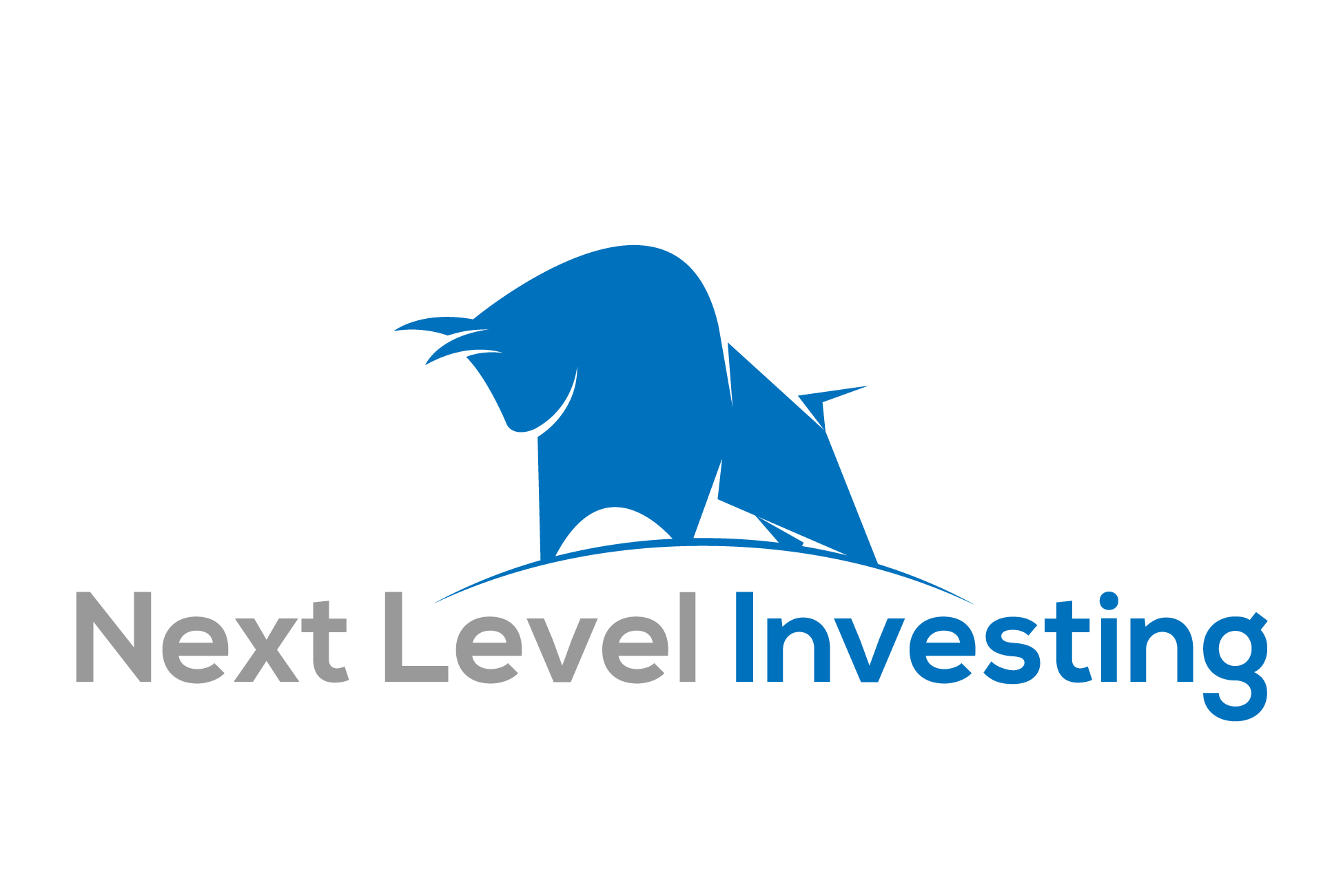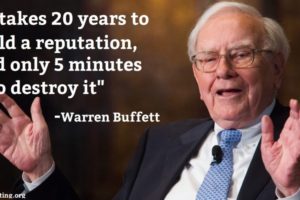Warren Buffett loves to play games (especially bridge), and when he plays, he plays to win. He loves to win. For him, the stock market is one of the best games he can ever play, against some of the smartest people in the world. It’s quite literally, what he lives for.
He wants to live another thirty years, just so he can continue using the power of compounding, and beat everyone that has ever played ‘the game’. I’d say. he has already won that game, for both himself as his investors over the last 50 years. But, he owes a lot of this gain to the power of the American Machine. And I think he knows it.
He attributes a lot of his success to the power of America’s dynamism, and he talks about it for a large part of his latest Annual Letter to Shareholders. I’ve included the relevant sections below. If you’re like me, after reading this post, you will feel excited for the future, I know I am. It truly is an amazing time we’re living in.
Even though some of the current world politics tend to cloud our view, the future still remains as sunny as ever.
Take it away Mr. Buffett...
America’s Dynamism
“Our efforts to materially increase the normalized earnings of Berkshire will be aided – as they have been throughout our managerial tenure – by America’s economic dynamism. One word sums up our country’s achievements: miraculous. From a standing start 240 years ago – a span of time less than triple my days on earth (Currently 86 years old) – Americans have combined human ingenuity, a market system, a tide of talented and ambitious immigrants, and the rule of law to deliver abundance beyond any dreams of our forefathers.
You need not be an economist to understand how well our system has worked. Just look around you. See the 75 million owner-occupied homes, the bountiful farmland, the 260 million vehicles, the hyper-productive factories, the great medical centers, the talent-filled universities, you name it – they all represent a net gain for Americans from the barren lands, primitive structures and meager output of 1776. Starting from scratch, America has amassed wealth totaling $90 trillion. (Yowza).
It’s true, of course, that American owners of homes, autos and other assets have often borrowed heavily to finance their purchases. If an owner defaults, however, his or her asset does not disappear or lose its usefulness. Rather, ownership customarily passes to an American lending institution that then disposes of it to an American buyer. Our nation’s wealth remains intact. As Gertrude Stein put it, “Money is always there, but the pockets change.”(1)
Thank the Market
“Above all, it’s our market system – an economic traffic cop ably directing capital, brains and labor – that has created America’s abundance. This system has also been the primary factor in allocating rewards. Governmental redirection, through federal, state and local taxation, has in addition determined the distribution of a significant portion of the bounty.
America has, for example, decided that those citizens in their productive years should help both the old and the young. Such forms of aid – sometimes enshrined as “entitlements” – are generally thought of as applying to the aged. But don’t forget that four million American babies are born each year with an entitlement to a public education. That societal commitment, largely financed at the local level, costs about $150,000 per baby. The annual cost totals more than $600 billion, which is about 3.5 % of GDP.
However our wealth may be divided, the mind-boggling amounts you see around you belong almost exclusively to Americans. Foreigners, of course, own or have claims on a modest portion of our wealth. Those holdings, however, are of little importance to our national balance sheet: Our citizens own assets abroad that are roughly comparable in value.
Early Americans, we should emphasize, were neither smarter nor more hardworking than those people who toiled century after century before them. But those venturesome pioneers crafted a system that unleashed human potential, and their successors built upon it.
This economic creation will deliver increasing wealth to our progeny far into the future. Yes, the
build-up of wealth will be interrupted for short periods from time to time. It will not, however, be stopped. I’ll repeat what I’ve both said in the past and expect to say in future years: Babies born in America today are the luckiest crop in history.”(1)
I’d have to agree. Just look at where the transportation industry is going as one example. In 20 years, we may have fully automated vehicles. That means, no steering wheel, no brake or gas pedals, and no drivers seat. In other words, a car's interior will be more akin to your living room, than it currently is to your current car's interior. Technology moves at a ridiculously fast pace, and brings change every step of the way. Personally, I’m excited to see what the future holds. I think it’s going to be different than any of us could possibly imagine.
Invest, invest, invest.
“America’s economic achievements have led to staggering profits for stockholders. During the 20th century the Dow-Jones Industrials advanced from 66 to 11,497, a 17,320% capital gain that was materially boosted by steadily increasing dividends. The trend continues: By year end 2016, the index had advanced a further 72%, to 19,763.
American business – and consequently a basket of stocks – is virtually certain to be worth far more in the years ahead. Innovation, productivity gains, entrepreneurial spirit and an abundance of capital will see to that. Ever-present naysayers may prosper by marketing their gloomy forecasts. But heaven help them if they act on the nonsense they peddle.
Many companies, of course, will fall behind, and some will fail. Winnowing of that sort is a product of market dynamism. Moreover, the years ahead will occasionally deliver major market declines – even panics – that will affect virtually all stocks. No one can tell you when these traumas will occur – not me, not Charlie, not economists, not the media. Meg McConnell of the New York Fed aptly described the reality of panics: “We spend a lot of time looking for systemic risk; in truth, however, it tends to find us.”(1)
In other words, don’t waste your time trying to predict when the next market fall will happen. It’s impossible. Instead, what you can do, is prepare for the inevitability. The longer the bull market continues, the steadily higher the probability for a market fall to occur. Remember, short term credit cycles tend to move in 8 year periods.The last happened in 2008, and the further we get away from that 8 year period, and the more expensive the stock market get’s, the higher likelihood of a correction. I have no idea when there will be one, I just know that there will be one. Here’s what Buffett has to say about that:
“During such scary periods, you should never forget two things: First, widespread fear is your friend as an investor, because it serves up bargain purchases. Second, personal fear is your enemy. It will also be unwarranted. Investors who avoid high and unnecessary costs and simply sit for an extended period with a collection of large, conservatively-financed American businesses will almost certainly do well. (Shout out to all you long term buy-and hold ETF investors).”(1)
The law of large numbers
“As for Berkshire, our size precludes a brilliant result: Prospective returns fall as assets increase. Nonetheless, Berkshire’s collection of good businesses, along with the company’s impregnable financial strength and owner-oriented culture, should deliver decent results. We won’t be satisfied with less.”(1)
This comment goes back to the law of large numbers, which is In a financial context, the law of large numbers indicates that a large entity that is growing rapidly cannot maintain that growth pace forever(2).
This is one of the major reasons we have a huge advantage over institutional investors. It is much more difficult to invest large sums of money, than it is small amounts. Think about the number of shares Buffett would have to buy in order to use even 1% of his cash on hand. Keep in mind, he is currently sitting on a whopping $86.37 Billion. So, 1% of that is $860 million dollars, that’s a lot of shares and that's only 1%. When you need to move that much money, you become the market, and you can’t seem to find enough sellers when you want to buy, or enough sellers when you want to sell. Making it extremely difficult to move in or out of a position. We on the other hand, are nimble. We can dance in and out of the market whenever we please. It takes us all of two seconds for us to enter, or exit our position, while it takes Buffett and portfolio managers, sometimes weeks to do the same.
In fact, by law some fund managers can’t even look at companies with a market cap of less than $1 billion. Luckily for us, this is where most of the value opportunities are. In those market caps under $1 billion.
It’s important to keep in mind that In times of market turmoil, even those large cap companies will be on sale for us to buy, at ever cheaper prices. We just have to be ready when that happens.
Conclusion
Short-term events will happen, and they will cause market turmoil. But, as long as we remember to follow our own rules and philosophy (Buy wonderful businesses at excellent prices) we’re going to be just fine. America will continue to grow, and technology will continue to change the world as we know it. It’s going to be one hell of a ride. Are you excited?
That’s all I have for you today,
Thanks for reading.
~Ryan Chudyk~
Before you go, don’t forget to sign up to my free (And awesome) Investing Newsletter. I’ll send you my NLI Checklist, as well as new investing lessons each week. Click the checklist to Sign up today!
PS.
If you want to learn more about the credit cycles, watch this short video made by Billionaire Ray Dalio. It’s really short, and extremely important for us to keep in mind during market times like these. Enjoy!
More from the Buffett Series:
Buffett’s History with Berkshire Hathaway, and his Amazing new HBO Documentary.






Leave a Reply
Get in the Conversation, Share your opinion.